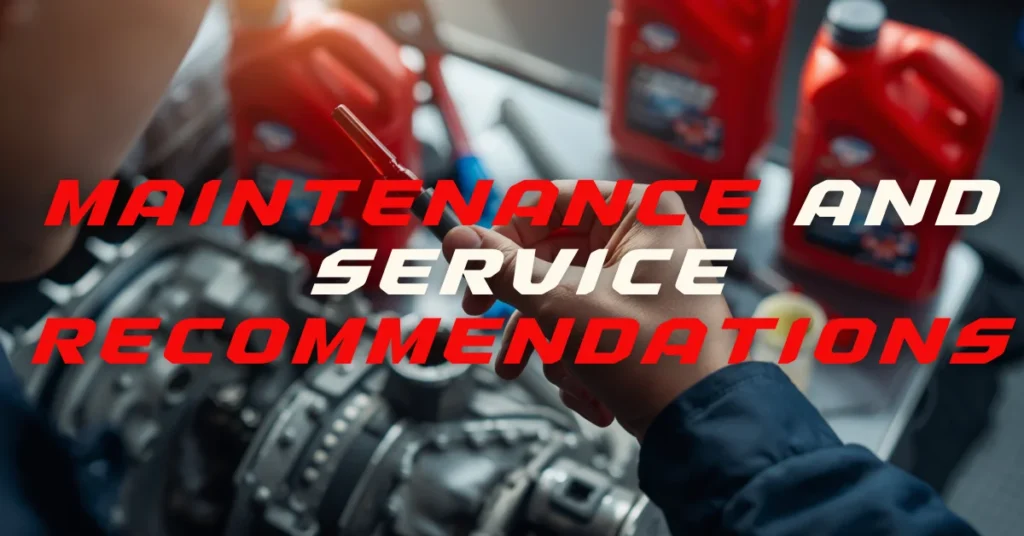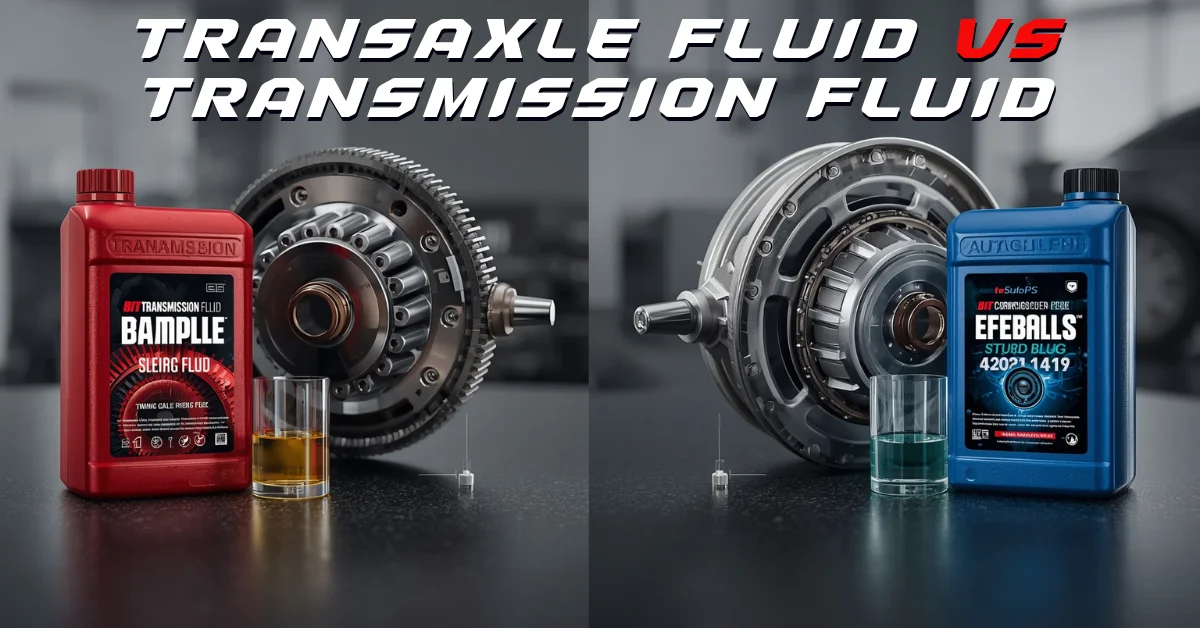Introduction
For vehicle owners and automotive enthusiasts, understanding the distinction between transaxle fluid and transmission fluid is crucial for maintaining optimal vehicle performance and longevity. While these terms are often used interchangeably, the reality is more nuanced than many realize. Whether you’re driving a front-wheel-drive sedan or a rear-wheel-drive sports car, knowing which fluid your vehicle requires and how to maintain it properly can prevent costly repairs and ensure smooth operation on the road. This comprehensive guide explores the differences, similarities, and specific applications of transaxle fluid and transmission fluid, helping you make informed decisions about your vehicle’s maintenance.
What is Transmission Fluid?
Transmission fluid is a specialized lubricant designed specifically for automatic and manual transmissions in vehicles. This hydraulic fluid serves multiple critical functions: it lubricates the intricate gears and bearing surfaces, facilitates smooth gear shifting through hydraulic pressure, cools the transmission system, and protects metal components from corrosion and wear.
For those concerned about transmission longevity, understanding the importance of proper fluid maintenance is essential. Our comprehensive transmission fluid change guide provides step-by-step instructions for maintaining your transmission system effectively.
Traditional automatic transmission fluid (ATF) typically contains a blend of mineral oils, detergents, viscosity improvers, and anti-wear additives. Manual transmission fluid, conversely, tends to be simpler in formulation but equally important for gear synchronization and smooth operation. The specific type of transmission fluid required depends on your vehicle’s make, model, and transmission design, with manufacturers often specifying proprietary fluid types to ensure compatibility and performance.
Understanding Transaxle Fluid
A transaxle is an integrated component that combines the transmission, differential, and final drive into a single unit, commonly found in front-wheel-drive vehicles. Transaxle fluid serves the same essential functions as traditional transmission fluid but is engineered to handle the unique demands of an integrated system that simultaneously manages power distribution to the wheels while controlling gear selection.
The primary distinction lies in the formulation. Transaxle fluid must provide lubrication for both transmission components and differential gears, which typically operate under different pressure and temperature conditions than standalone transmissions. This dual-purpose requirement means transaxle fluid often contains additional additives to handle extreme pressure situations and resist degradation over extended service intervals.

Key Differences Between Transaxle Fluid and Transmission Fluid
| Aspect | Transmission Fluid | Transaxle Fluid |
| Application | Rear-wheel-drive vehicles and some all-wheel-drive systems | Front-wheel-drive vehicles and integrated drivetrain systems |
| Components Lubricated | Transmission gears and bearings only | Transmission, differential, and final drive simultaneously |
| Pressure Requirements | Standard pressure specifications | Higher pressure handling capabilities |
| Additive Package | Optimized for transmission needs | Formulated for transmission and differential gear demands |
| Typical Viscosity | ATF: 6-8 cSt at 40°C; MTF: 75W-90 or similar | Usually 75W or equivalent for combined performance |
| Change Interval | 30,000-100,000 miles (varies by vehicle) | 30,000-100,000 miles (varies by manufacturer) |
| Cost | Generally moderate | Often slightly higher due to specialized formulation |
Why the Distinction Matters
Using the incorrect fluid type can result in significant complications for your vehicle’s drivetrain. Transmission fluid lacks the extreme pressure additives necessary for differential gear protection, while attempting to use standard differential oil in a transmission system could cause slipping, harsh shifts, and premature wear.
Understanding your vehicle’s specific requirements is crucial, whether you own a typical rear-wheel-drive sedan or a modern front-wheel-drive model. For additional insights on related drivetrain components, our guide on how many axles does a car have provides valuable context on rear-axle and differential systems. Additionally, learning about what is traction control can help you better understand how transaxle systems interact with modern vehicle safety features.

Maintenance and Service Recommendations
Proper fluid maintenance is essential for transaxle and transmission longevity. Here are critical maintenance guidelines:
Regular Inspection
- Check fluid color and condition monthly
- Red or dark brown fluid indicates necessary service
- Monitor fluid level between scheduled services
Service Intervals
- Follow manufacturer-recommended intervals in your owner’s manual
- Many modern vehicles feature sealed systems with extended intervals up to 100,000 miles
- Severe driving conditions warrant more frequent checks and services
Fluid Selection
- Always consult your vehicle’s specifications before purchasing fluid
- Never mix different fluid types or brands
- Verify compatibility with your specific transmission or transaxle model
Changing Your Fluid
- Warm your engine before draining to improve fluid flow
- Drain completely and replace the filter if applicable
- Fill to the correct level using the specified fluid type
- Test drive and recheck levels after service
For comprehensive guidance on this process, refer to our detailed transmission fluid change guide, which walks you through each step. Additionally, maintaining a complete car maintenance checklist helps ensure you don’t miss critical service intervals for your transmission and other vital systems.
Common Misconceptions
Many vehicle owners mistakenly believe transaxle fluid and transmission fluid are interchangeable. This misconception can lead to serious mechanical problems. Another common myth is that sealed systems require no maintenance. While modern systems have extended intervals, periodic monitoring remains prudent.
Some owners also underestimate the importance of using manufacturer-specified fluids, believing all automatic transmission fluids are essentially identical. The reality is that different manufacturers formulate fluids specifically for their transmission designs, and substituting inferior or incompatible products can void warranties and cause premature failure.
Identifying Your Vehicle’s Requirements
Determining whether your vehicle uses transaxle or transmission fluid is straightforward. Front-wheel-drive vehicles almost universally employ transaxles, while rear-wheel-drive vehicles use traditional transmissions. Your owner’s manual will definitively specify which fluid type your vehicle requires, including the exact viscosity, brand recommendations, and service intervals.
The most reliable approach involves consulting your vehicle’s specification sheet, which lists the exact fluid type by OEM designation or equivalent compatible products. This ensures you select the appropriate fluid for your specific drivetrain architecture. Understanding your vehicle’s configuration is equally important—learning about how many axles does a car have can clarify whether your vehicle uses a transaxle or traditional transmission setup.
Impact on Vehicle Performance
Proper fluid selection and maintenance directly influence transmission or transaxle performance characteristics. With the correct fluid, you’ll experience smooth gear transitions, improved fuel efficiency, and extended component lifespan. Conversely, using inappropriate fluid can result in sluggish performance, transmission noise, difficulty shifting, and eventual system failure.
Temperature control is another critical factor. Both transaxle and transmission fluids help dissipate heat generated during operation. Degraded or incorrect fluid loses its heat-dissipating properties, leading to elevated temperatures that accelerate component wear and potentially cause transmission failure. This is particularly important for high-performance driving or vehicles operating under extreme conditions.
Conclusion
Understanding the distinction between transaxle fluid and transmission fluid is essential knowledge for every vehicle owner. While these specialized lubricants serve similar purposes—protecting, cooling, and enabling smooth operation of drivetrain components—their formulations are purposefully engineered for specific applications. Transaxle fluid’s robust additive package makes it indispensable for front-wheel-drive vehicles, while traditional transmission fluid serves rear-wheel-drive systems effectively.
By investing time in understanding your vehicle’s specific requirements and adhering to manufacturer-recommended maintenance schedules, you protect your investment and ensure reliable performance for years to come. Always consult your owner’s manual, use the specified fluid type, and maintain regular service intervals. Your transmission and transaxle will reward you with smooth, efficient operation and extended longevity. Don’t overlook this critical maintenance task—proper fluid selection and care are the foundation of a healthy, responsive drivetrain.
Frequently Asked Questions
Can I use transmission fluid in my transaxle?
No. While they appear similar, transaxle fluid is specifically formulated with additives for differential operation. Using transmission fluid can damage differential gears and void your warranty.
How often should I change my transaxle fluid?
Modern vehicles typically require service every 30,000-100,000 miles, depending on manufacturer specifications. Check your owner’s manual for precise recommendations.
What does transmission fluid color indicate?
Red or bright color indicates fresh fluid. Brown or dark red suggests aging. Black fluid indicates serious contamination and requires immediate service.
Is there a universal transaxle fluid?
No. Different manufacturers specify different fluid types. Always use the OEM-recommended fluid or an approved equivalent for your specific vehicle.
Can I mix different brands of transaxle fluid?
Mixing brands is not recommended, as different manufacturers formulate products with varying additives. Stick to one consistent product throughout service intervals.
What happens if I don’t change my transmission or transaxle fluid?
Degraded fluid loses effectiveness, leading to increased wear, poor shifting performance, overheating, and potential transmission failure an expensive repair.

